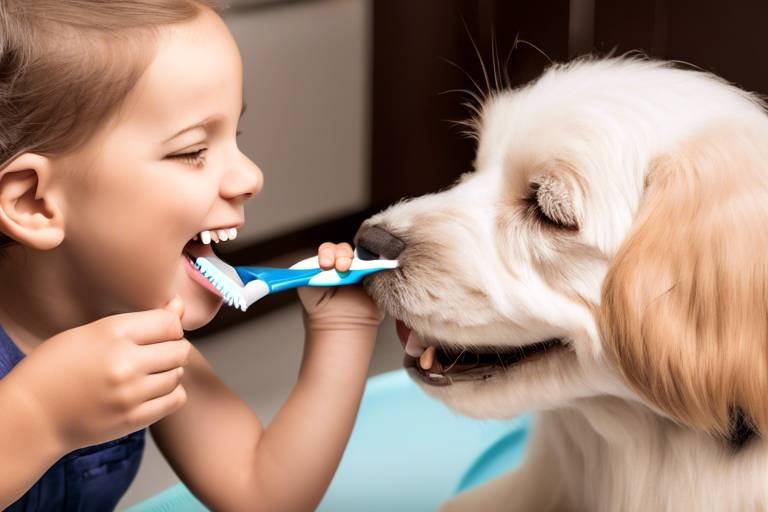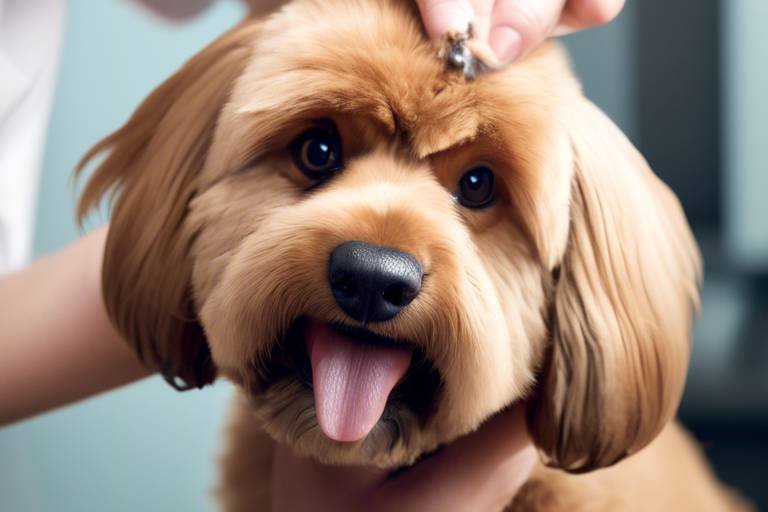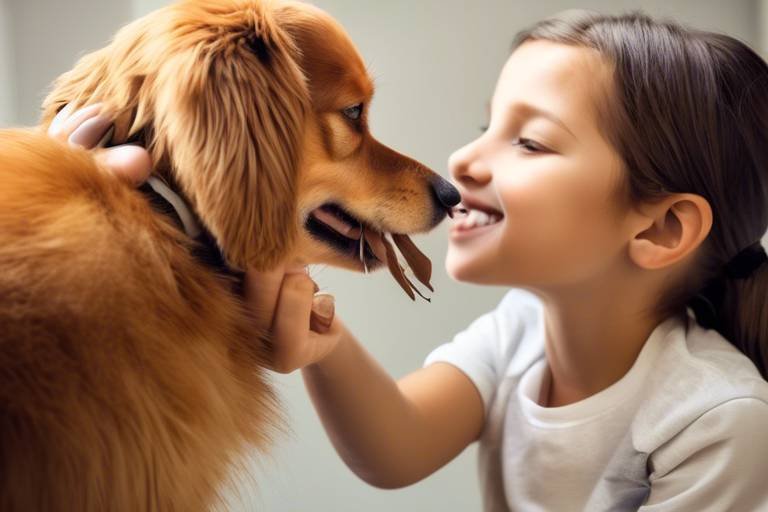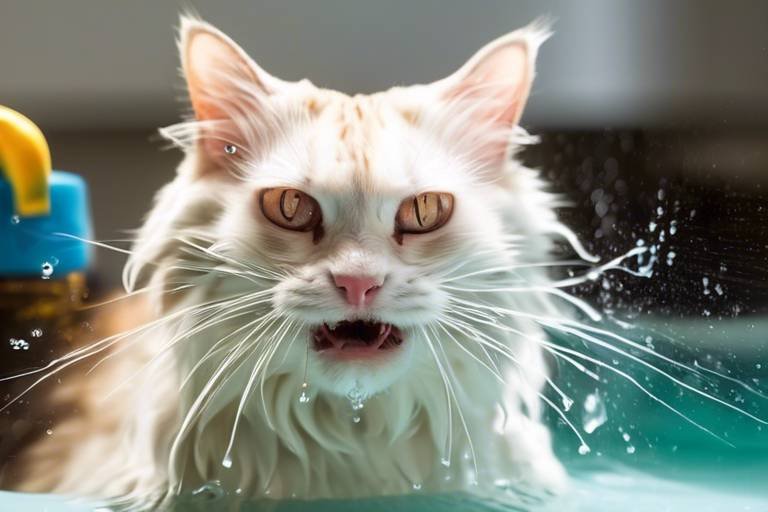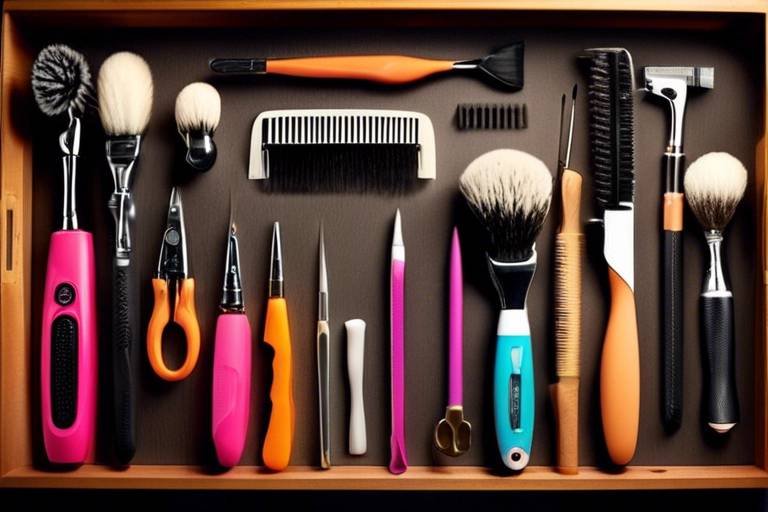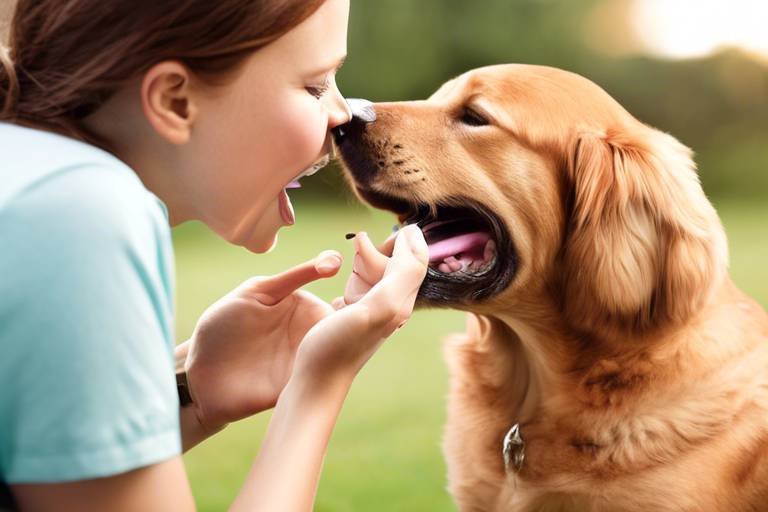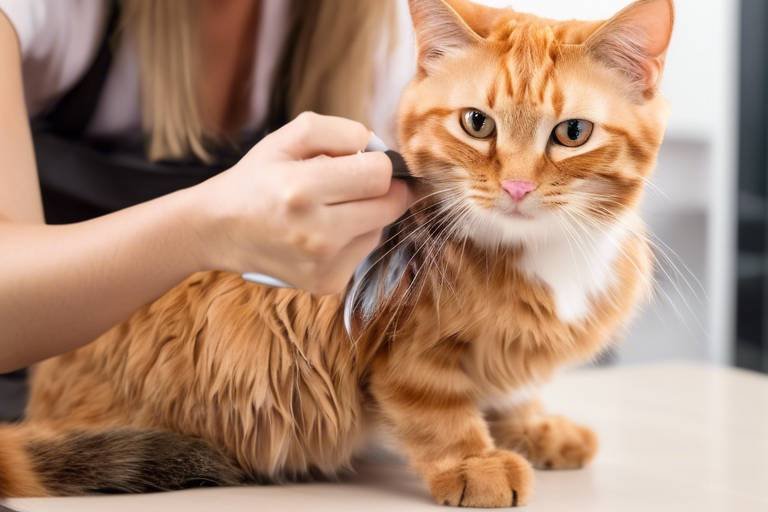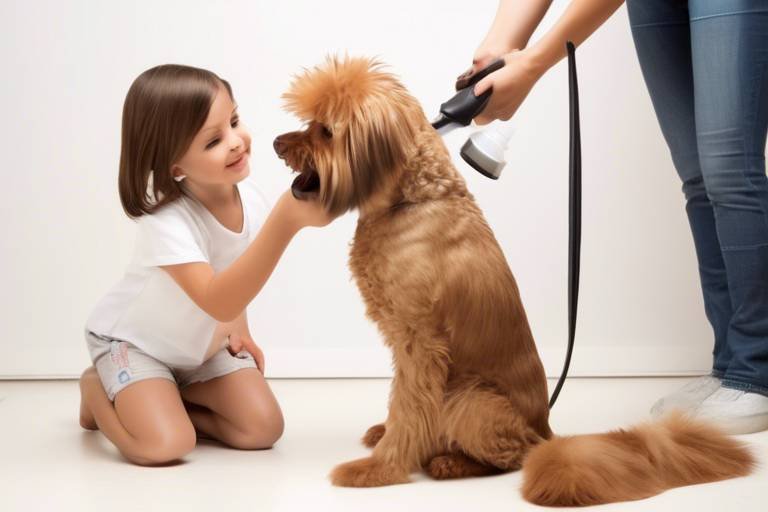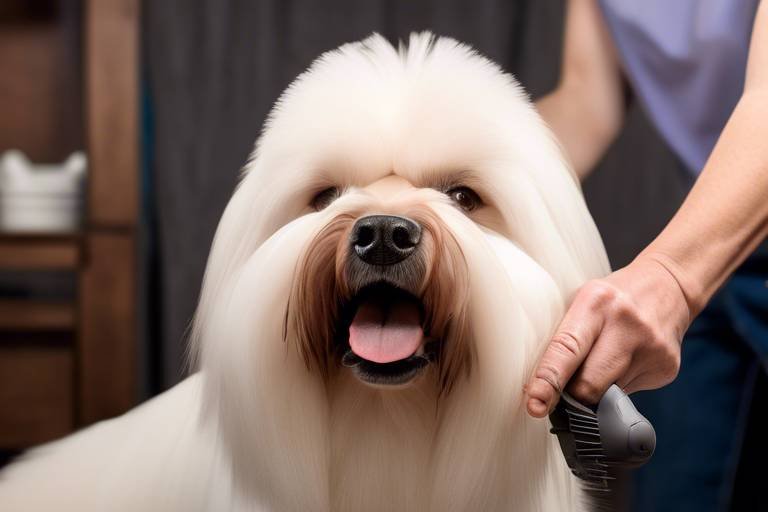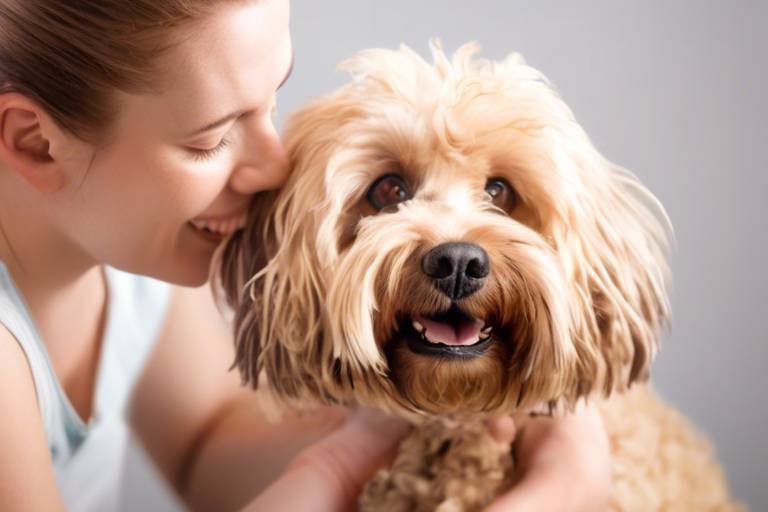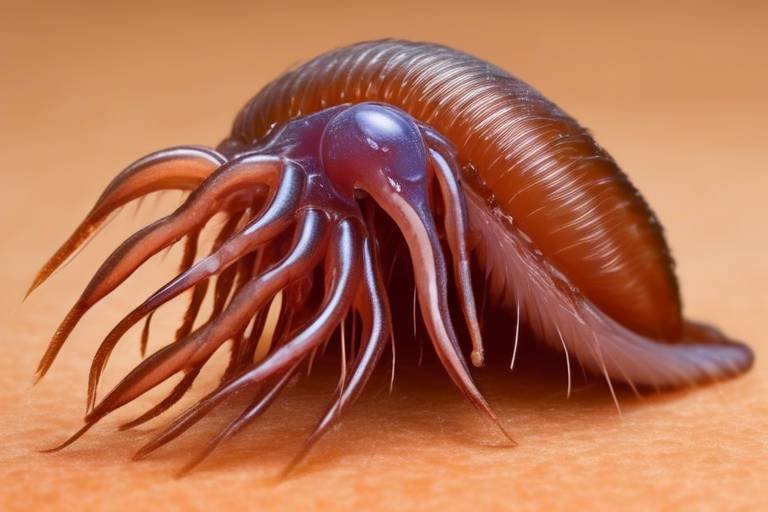How to Brush Your Pet's Teeth at Home
Welcome to the world of pet dental care! If you're a pet owner, you know that keeping your furry friend happy and healthy is a top priority. But did you know that one of the most overlooked aspects of their health is their dental hygiene? Just like us, pets can suffer from dental issues that can lead to serious health problems if left unchecked. In this guide, we’ll explore the importance of brushing your pet's teeth at home, along with tips and tricks to make the process as smooth as possible. So grab your toothbrush, and let’s dive in!
Understanding the significance of dental hygiene is crucial for your pet's overall health. Regular brushing can help avoid plaque buildup, which can lead to gum disease, tooth decay, and even infections that affect other organs. Did you know that periodontal disease is one of the most common health issues in pets? It can cause pain, tooth loss, and even heart and kidney problems. By investing just a few minutes each week into your pet’s dental care, you can promote their well-being and save on costly veterinary bills in the long run. Think of it as a small effort that yields big rewards!
Selecting the appropriate dental care tools is crucial for effective brushing. You wouldn’t use a hammer to drive a screw, right? The same goes for pet dental care. You need the right toothbrush and toothpaste to get the job done. Let’s break it down:
Different toothbrushes serve various purposes. Here’s a quick look at the options available:
- Finger Brushes: These are small, soft brushes that fit over your finger, allowing for better control. They’re perfect for pets who are new to brushing.
- Traditional Brushes: These look like human toothbrushes but are designed for pets. They come in various sizes to suit different breeds.
- Electric Toothbrushes: These can make brushing quicker and more efficient. They’re especially useful for pets who have a lot of plaque buildup.
Finger brushes offer a gentle way to clean your pet's teeth. They are easy to use and provide better control during the brushing process. Simply slip one on your finger, apply pet-friendly toothpaste, and gently brush your pet's teeth. It’s like giving them a little massage while keeping their teeth clean!
Electric toothbrushes can make brushing more efficient. They often have softer bristles and can reach areas that manual brushes might miss. Plus, many pets enjoy the gentle vibrations. Just remember to choose a model specifically designed for pets to ensure safety and effectiveness.
Using pet-specific toothpaste is essential for safety. Human toothpaste contains ingredients that can be harmful to pets, so always opt for products designed for them. Look for flavors like chicken or peanut butter, which can make the experience more enjoyable for your furry friend. It’s like a tasty treat that also happens to clean their teeth!
Getting your pet accustomed to tooth brushing is vital for a successful routine. Just like us, pets can be apprehensive about new experiences. Gradually introducing brushing can reduce anxiety and make it a positive experience for both of you.
Start by letting your pet sniff and lick the toothbrush and toothpaste. Then, gradually introduce the brushing process. Start with short sessions, and don’t forget to praise your pet for their cooperation. This helps create a comfortable environment and builds trust.
Using treats and praise can encourage your pet to accept brushing. After each session, reward your pet with a treat or extra playtime. This positive reinforcement makes them associate brushing with something enjoyable, increasing the likelihood that they’ll cooperate in the future.
Now that your pet is ready, let’s go through the proper technique for brushing their teeth. Follow these steps to ensure thorough cleaning and comfort for your pet.
Finding the right position is crucial for effective brushing. Ideally, you want your pet to be calm and comfortable. You can either sit them on your lap or have them lie down on a flat surface. Make sure they feel secure, as this will make the process easier for both of you.
When you're ready to brush, apply a small amount of toothpaste to the brush. Start at the back teeth, using gentle circular motions. Remember to brush both the outer and inner surfaces of the teeth, as well as the gum line. Aim for about two minutes of brushing, but don’t worry if you can’t get it all done at once. Consistency is key!
After brushing, maintaining dental health is essential. Here are additional practices to keep your pet's teeth and gums healthy:
Routine veterinary dental check-ups are vital for monitoring oral health. Schedule visits at least once a year, and discuss any concerns with your vet. They can provide professional cleanings and check for any underlying issues.
Incorporating dental chews and toys into your pet's routine can aid in maintaining oral hygiene. Look for products that are specifically designed to promote dental health. They can help reduce plaque and tartar buildup while keeping your pet entertained!
Q: How often should I brush my pet's teeth?
A: Ideally, you should brush your pet's teeth at least two to three times a week. Daily brushing is even better for optimal dental health.
Q: Can I use human toothpaste on my pet?
A: No, human toothpaste contains ingredients that can be harmful to pets. Always use toothpaste specifically designed for pets.
Q: What if my pet doesn’t like having their teeth brushed?
A: Start slowly and use positive reinforcement to make the experience enjoyable. If necessary, consult your veterinarian for additional tips.

The Importance of Dental Care for Pets
When it comes to our furry companions, we often think about their diet, exercise, and regular vet visits, but dental care is just as crucial! Did you know that poor dental hygiene can lead to serious health issues for your pet? That's right! Just like humans, pets can suffer from gum disease, tooth decay, and even infections that can affect their heart, liver, and kidneys. It’s a bit like ignoring a small leak in your roof; if you don’t address it promptly, it can turn into a much larger problem.
Regular brushing can help avoid plaque buildup, which is the sticky film of bacteria that forms on teeth. If left untreated, plaque can harden into tartar, leading to painful dental issues. Imagine how uncomfortable it would be for you to have a toothache; now think about how your pet might feel if they’re experiencing something similar! By taking the time to brush your pet's teeth, you’re not only promoting their oral health but also enhancing their overall well-being.
Moreover, dental care is an essential part of your pet's preventive health routine. Regular brushing can help you spot any potential problems early on, allowing for timely intervention. You wouldn’t wait until you’re in excruciating pain to visit the dentist, right? The same logic applies to our pets. By maintaining a consistent dental care regimen, you can help ensure that your furry friend remains happy and healthy for years to come.
In addition to brushing, there are other ways to maintain your pet's dental hygiene. Consider incorporating dental chews and toys into their routine. These can help reduce plaque and tartar buildup while keeping your pet entertained. Think of them as the fun sidekicks to your brushing routine! And don’t forget the importance of regular vet check-ups; your veterinarian can provide professional cleanings and check for any underlying issues that might need addressing.
In summary, prioritizing your pet's dental care is not just about keeping their smile bright; it’s about ensuring a long, healthy life. So, grab that toothbrush and let’s get started on a journey to better dental health for your beloved pet!
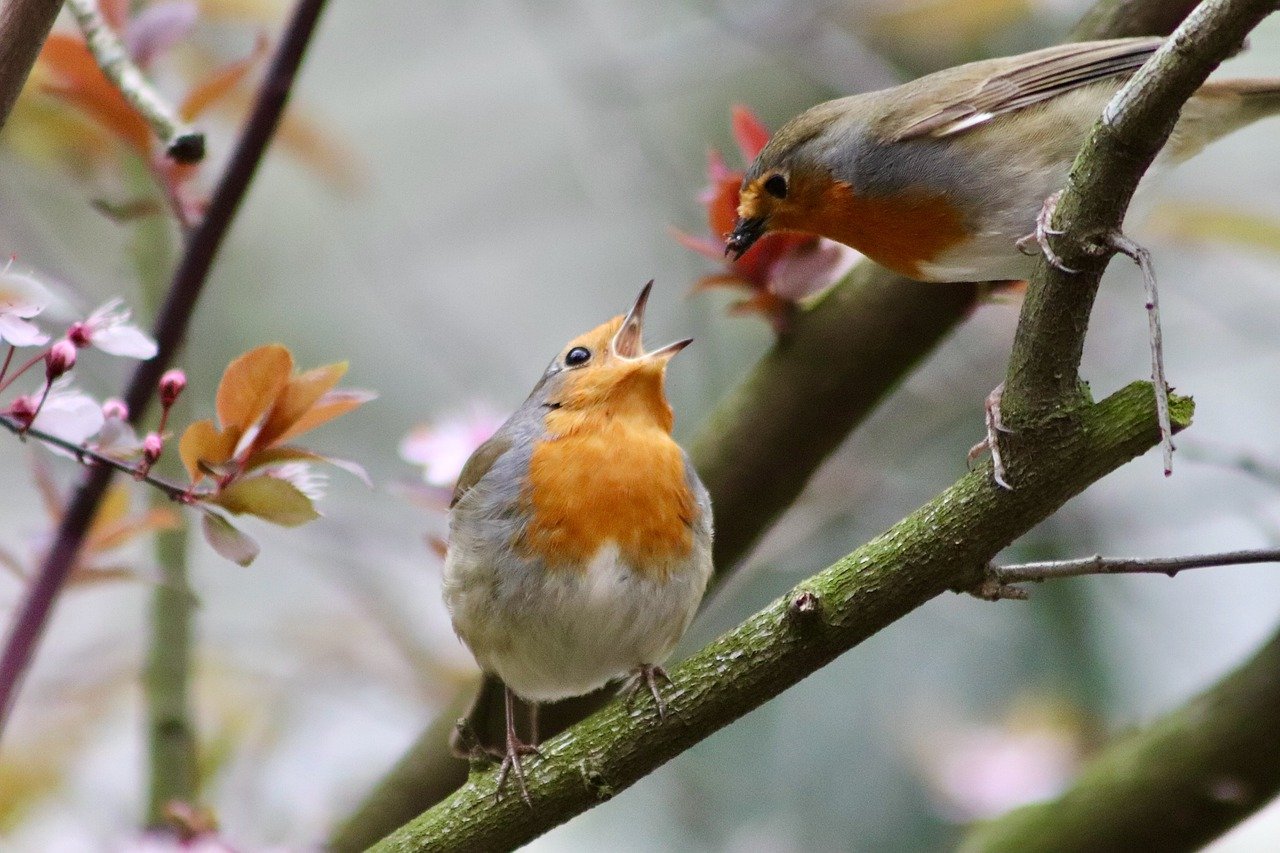
Choosing the Right Tools
When it comes to brushing your pet's teeth, selecting the right tools can make all the difference. Think of it like choosing the perfect paintbrush for an artist; the right tools not only enhance the experience but also ensure a better outcome. Just like we need specific tools for our dental care, our furry friends deserve the best when it comes to their oral hygiene. The two main components you'll need are a toothbrush and toothpaste designed specifically for pets. But how do you choose the right ones? Let's dive in!
First off, let's discuss the types of toothbrushes available for your pets. You might be surprised to learn that not all toothbrushes are created equal! Here are some common options:
- Finger Brushes: These are soft brushes that fit over your finger, allowing you to have better control while brushing. They’re gentle and great for pets who are new to the brushing experience.
- Traditional Toothbrushes: These look similar to human toothbrushes but are usually smaller and have softer bristles. They can reach the back teeth better than finger brushes.
- Electric Toothbrushes: While they may seem a bit high-tech, electric toothbrushes can make the process quicker and more efficient, providing a thorough clean in less time.
Now, let’s talk about toothpaste. It’s crucial to use toothpaste that is specifically formulated for pets. Human toothpaste contains xylitol and fluoride, which are toxic to dogs and cats. Pet-friendly toothpaste comes in flavors that appeal to your furry friend, like chicken or peanut butter, making the brushing experience more enjoyable. When choosing toothpaste, look for the following:
| Flavor | Benefits |
|---|---|
| Chicken | Highly palatable for dogs, encourages them to accept brushing. |
| Peanut Butter | Great for both dogs and some cats, making brushing a treat. |
| Vanilla Mint | Freshens breath while being safe for pets. |
In summary, selecting the right toothbrush and toothpaste is essential to creating a successful dental care routine for your pet. Just like we wouldn’t use a paintbrush meant for oil paints on watercolors, you want to ensure that you’re using tools designed specifically for your pet’s dental needs. So, gear up with the right tools, and you’ll be well on your way to keeping your pet’s teeth sparkling clean!
Q: How often should I brush my pet's teeth?
A: Ideally, you should brush your pet's teeth daily. However, if that’s not possible, aim for at least 2-3 times a week to maintain good dental health.
Q: Can I use human toothpaste on my pet?
A: No, human toothpaste contains ingredients that are harmful to pets. Always use toothpaste specifically made for pets.
Q: What if my pet resists brushing?
A: Start slowly and use positive reinforcement. Gradual introduction and treats can help your pet get used to the process.
Q: Are dental chews effective?
A: Yes! Dental chews can help reduce plaque and tartar buildup, but they should complement regular brushing, not replace it.
Types of Toothbrushes
When it comes to maintaining your furry friend's dental hygiene, choosing the right toothbrush is just as important as the actual brushing technique. There are several types of toothbrushes available, each designed to cater to different needs and preferences. Understanding these options can help you make an informed decision and ensure that your pet's dental care routine is both effective and enjoyable.
First up, we have the finger brushes. These nifty little tools are designed to fit over your finger, allowing you to gently scrub your pet's teeth with more control. They are particularly great for pets who may be anxious or resistant to having a traditional toothbrush in their mouth. By using a finger brush, you can easily navigate around your pet's mouth, making it easier to reach tricky spots. Plus, they tend to be softer and less intimidating for your pet, which can lead to a more positive brushing experience.
Next, let’s talk about traditional toothbrushes. These are similar to what we humans use, but they come in various sizes and shapes to suit different pets—from tiny kittens to large dogs. Traditional brushes often have angled heads and soft bristles, which can effectively remove plaque without hurting your pet's gums. They can be a bit challenging to use at first, especially if your pet is squirmy, but with practice, you’ll find that they can provide a thorough cleaning.
If you're looking for something that can make your life a bit easier, electric toothbrushes are a fantastic option. These devices can make the brushing process quicker and more efficient, thanks to their oscillating heads that can reach more surface area in less time. Many electric toothbrushes come with timers to ensure you brush for the recommended two minutes, which is especially helpful for pet owners who might lose track of time. However, it’s essential to choose a model specifically designed for pets, as human electric toothbrushes may be too harsh for their sensitive gums.
Here's a quick comparison of the three types of toothbrushes:
| Type | Advantages | Considerations |
|---|---|---|
| Finger Brushes | Gentle, easy to control, less intimidating | May not reach all areas effectively |
| Traditional Toothbrushes | Thorough cleaning, various sizes available | Can be challenging to use on squirmy pets |
| Electric Toothbrushes | Efficient, often includes timers | Requires charging, may be too intense for some pets |
Ultimately, the best toothbrush for your pet depends on their individual needs and preferences. It might take a bit of trial and error to find the perfect fit, but investing in the right tools will pay off in the long run. Happy brushing!
Finger Brushes
When it comes to maintaining your pet's dental hygiene, can be a game changer. These little tools are designed to fit snugly over your finger, allowing for a more controlled and gentle brushing experience. Imagine having the precision of a surgeon while ensuring your furry friend’s teeth stay clean and healthy. Finger brushes are particularly great for pets who may be anxious about traditional toothbrushes. They provide a way to ease into the brushing routine without overwhelming your pet.
One of the biggest advantages of finger brushes is their gentleness. Since they are soft and flexible, they can easily adapt to the contours of your pet's mouth, making it easier to reach those tricky spots where plaque tends to accumulate. This is especially important for smaller pets or those with sensitive gums. Using a finger brush feels more like a gentle massage than a dental chore, which can help your pet relax and accept this new routine.
Another benefit is the control they offer. With a finger brush, you have direct contact with your pet's teeth and gums, allowing you to apply the right amount of pressure without causing discomfort. This can be particularly useful for pets who might squirm or move around during brushing. You can easily adjust your technique based on your pet's response, ensuring that they remain comfortable throughout the process.
For best results, consider the following tips when using a finger brush:
- Start Slowly: Allow your pet to sniff and investigate the brush before you begin.
- Use Pet-Safe Toothpaste: Always use toothpaste formulated for pets, as human toothpaste can be harmful.
- Be Gentle: Apply light pressure and brush in circular motions to avoid hurting your pet's gums.
- Make It Fun: Incorporate treats and praise to create a positive association with the brushing process.
In summary, finger brushes are an excellent choice for pet owners looking to establish a dental care routine. They are easy to use, effective, and can make the experience more enjoyable for both you and your furry friend. By incorporating finger brushing into your pet's dental hygiene regimen, you are taking a significant step towards ensuring their overall health and happiness.
Q: How often should I brush my pet's teeth?
A: Ideally, you should brush your pet's teeth daily. However, even a few times a week can make a significant difference in their dental health.
Q: Can I use human toothpaste for my pet?
A: No, human toothpaste contains ingredients that can be harmful to pets. Always use toothpaste specifically designed for animals.
Q: What if my pet resists brushing?
A: It's essential to introduce brushing gradually. Use positive reinforcement and make the experience as enjoyable as possible.
Q: Are finger brushes suitable for all pets?
A: Finger brushes are generally suitable for most pets, but larger dogs may benefit from traditional or electric toothbrushes.
Electric Toothbrushes
When it comes to brushing your pet's teeth, can be a game changer! These tools not only make the process easier for you, but they can also enhance the effectiveness of your pet's dental care routine. Imagine having a tiny, buzzing assistant that helps you clean those hard-to-reach areas in your furry friend's mouth. Sounds appealing, right?
One of the primary benefits of using an electric toothbrush is its ability to provide consistent and effective cleaning. The rapid motion of the brush head can help break down plaque and food particles more efficiently than manual brushing. This is especially beneficial for pets that may be a bit squirmy or uncooperative during the brushing process. With an electric toothbrush, you can cover more surface area in less time, making the experience quicker and less stressful for both you and your pet.
Additionally, many electric toothbrushes come with features designed specifically for pet dental care. For example, some models have soft bristles that are gentle on your pet's gums, reducing the risk of irritation. Others may have built-in timers that help you brush for the recommended duration, ensuring that you give your pet's teeth the attention they deserve. This can be particularly useful if you’re not sure how long you should be brushing.
However, it's essential to choose the right electric toothbrush for your pet. Look for options that are specifically designed for animals, as human toothbrushes may not be suitable. You want to ensure that the brush head is appropriately sized for your pet's mouth and that the bristles are soft enough to prevent any damage to their gums. Here’s a quick comparison of some popular electric toothbrushes for pets:
| Brand | Features | Price Range |
|---|---|---|
| Paws & Claws | Soft bristles, built-in timer, waterproof | $25 - $35 |
| Pet Smile | Rechargeable, ergonomic handle, multiple speed settings | $30 - $50 |
| Vet's Best | Gentle vibration, compact size, easy to clean | $20 - $30 |
In conclusion, electric toothbrushes can be a fantastic addition to your pet's dental care toolkit. They not only make the brushing process easier and more effective, but they also help create a positive experience for your pet. Just remember to introduce the electric toothbrush gradually, allowing your furry friend to get used to the buzzing sensation. With patience and the right tools, you'll be well on your way to maintaining your pet's dental health!
Q: How often should I brush my pet's teeth with an electric toothbrush?
A: Ideally, you should brush your pet's teeth at least two to three times a week. Daily brushing is even better for optimal dental health.
Q: Can I use human toothpaste with an electric toothbrush for my pet?
A: No, using human toothpaste can be harmful to pets. Always opt for pet-specific toothpaste that is safe for them to ingest.
Q: Will my pet be scared of the electric toothbrush?
A: Some pets may initially be wary of the buzzing sound. Introduce the toothbrush slowly and allow them to sniff it before using it to help them feel more comfortable.
Choosing Pet-Friendly Toothpaste
When it comes to maintaining your furry friend's dental health, choosing the right toothpaste is just as important as the brushing technique you employ. Unlike human toothpaste, which can be toxic to pets, pet-friendly toothpaste is specifically formulated to be safe and effective for our four-legged companions. So, what should you look for when selecting a toothpaste for your pet? Let’s dive into the essential factors that will guide your choice.
First and foremost, it's crucial to select a toothpaste that is designed specifically for pets. These products are free from harmful ingredients such as fluoride and xylitol, both of which can be dangerous if ingested by animals. Instead, pet toothpaste typically contains safe, digestible ingredients that can help combat plaque and tartar buildup while also being palatable for your pet. After all, if your pet doesn't enjoy the flavor, they are less likely to cooperate during brushing!
Pet toothpaste comes in a variety of flavors that cater to different tastes. Some popular options include:
- Chicken
- Beef
- Peanut butter
- Seafood
These enticing flavors can make brushing a more enjoyable experience for your pet. Imagine trying to brush your teeth with a flavor you dislike—it's not exactly motivating, right? So, picking a flavor that your pet loves can significantly enhance their willingness to participate in their dental care routine.
Another important aspect to consider is the consistency of the toothpaste. You want a product that is not too runny or too thick, allowing for easy application while still providing effective cleaning. Many pet owners prefer a paste-like consistency that can easily adhere to the toothbrush and your pet's teeth. This ensures that you can effectively scrub away plaque and food particles without making a mess.
Additionally, some pet toothpaste brands include natural ingredients that promote oral health. Look for products that contain ingredients like:
- Enzymes to break down plaque
- Natural abrasives for gentle scrubbing
- Herbs like parsley for freshening breath
These natural components can enhance the effectiveness of the toothpaste while being gentle on your pet’s gums. Remember, a healthy mouth contributes to a healthy pet, so opt for products that prioritize your furry friend's well-being.
Before making a purchase, it's also a good idea to consult with your veterinarian. They can recommend specific brands or formulations based on your pet's unique needs. Some pets may have sensitivities or pre-existing dental issues that require special attention, and your vet can guide you toward the best options available.
In conclusion, selecting the right pet-friendly toothpaste is a vital step in your pet's dental care routine. By choosing a safe, appealing, and effective toothpaste, you set the stage for a positive brushing experience that promotes long-term oral health. After all, a happy pet with a healthy smile is what we all aim for!
Q: Can I use human toothpaste on my pet?
A: No, human toothpaste can contain harmful ingredients for pets, such as fluoride and xylitol. Always use toothpaste specifically formulated for pets.
Q: How often should I brush my pet's teeth?
A: Ideally, you should brush your pet's teeth daily. However, if that’s not possible, aim for at least a few times a week.
Q: What if my pet doesn't like the toothpaste?
A: Try different flavors of pet toothpaste to find one that your pet enjoys. You can also introduce the toothpaste gradually to help them get used to it.
Q: Are there any additional dental care products I should consider?
A: Yes! Dental chews, water additives, and regular veterinary check-ups can all contribute to your pet's overall dental health.
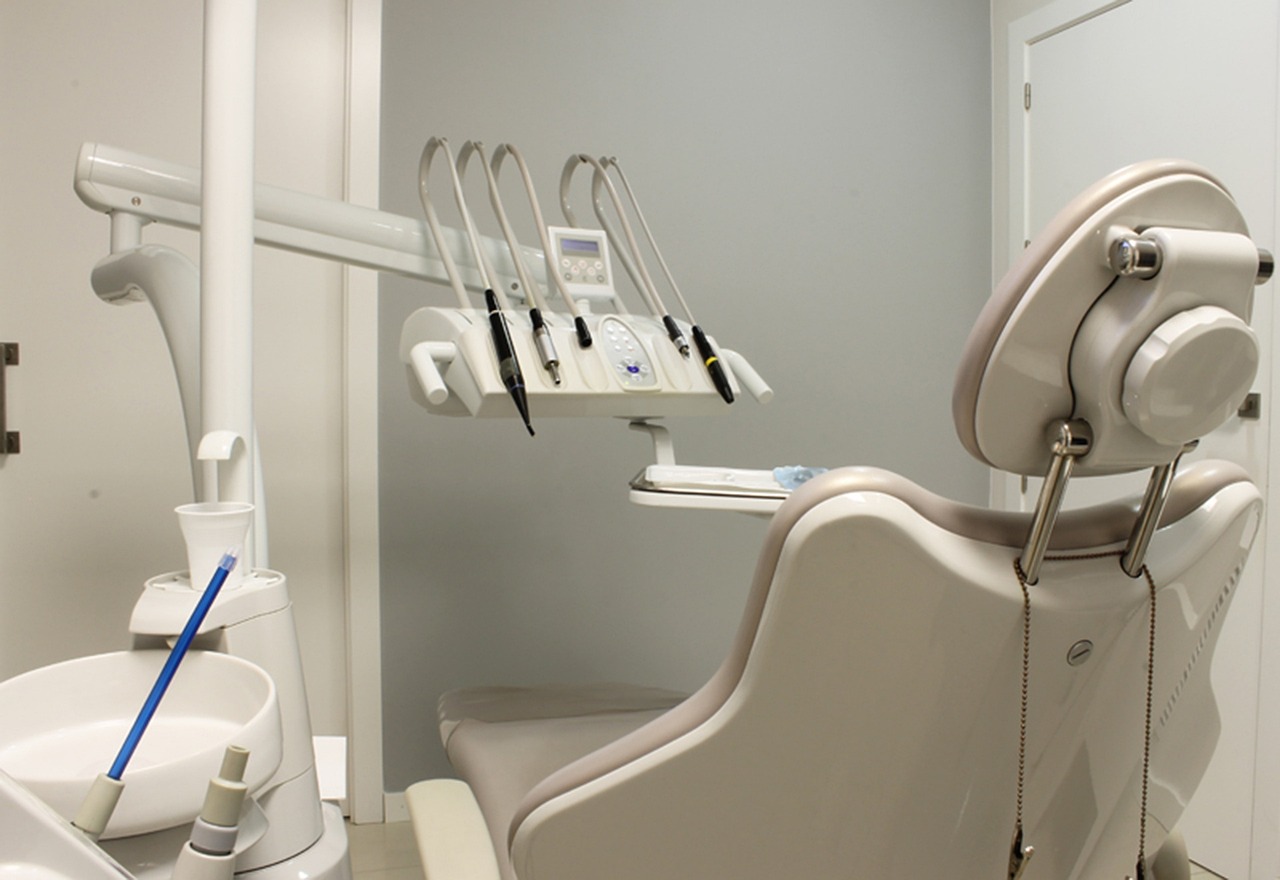
Preparing Your Pet for Brushing
Getting your furry friend ready for a tooth brushing session is more than just grabbing a toothbrush and toothpaste. It's about creating a positive experience that will help your pet feel comfortable and relaxed. Just like humans, pets can be a bit apprehensive about dental care, especially if they're not used to it. So, how do you make this routine enjoyable? Let's dive into some effective techniques!
First and foremost, gradual introduction is key. You wouldn’t want to dive into a cold pool without easing in, right? Start by letting your pet sniff and taste the toothpaste. Most pet-specific toothpastes come in flavors like chicken or peanut butter, which can intrigue your pet. This initial exposure helps them associate tooth brushing with something positive and tasty.
Once your pet seems comfortable with the taste, you can progress to gently rubbing their gums with your finger. This step is crucial as it acclimates them to the sensation of having something in their mouth. Keep the sessions short—just a minute or two at first. Gradually increase the duration as your pet becomes more accustomed to the routine.
Another effective technique is to use positive reinforcement. Every time your pet allows you to brush their teeth or even just opens their mouth, shower them with praise or offer a small treat. This not only encourages good behavior but also builds a bond of trust between you and your pet. Remember, patience is vital. If your pet shows signs of stress or discomfort, take a step back and try again later. You want to make this a fun activity, not a chore!
To summarize, here are a few tips to prepare your pet for brushing:
- Introduce the toothpaste gradually and let them taste it.
- Start with finger rubbing before moving to the toothbrush.
- Keep initial sessions short and sweet.
- Use treats and praise to reinforce positive behavior.
- Be patient and attentive to your pet's comfort level.
By taking these steps, you’re not just brushing your pet's teeth; you’re also building a trusting relationship. Remember, the goal is to make dental care a regular and enjoyable part of your pet's routine. In the next section, we’ll discuss the actual brushing technique that will help keep those pearly whites shining bright!
Q1: How often should I brush my pet's teeth?
A: Ideally, you should brush your pet's teeth at least 2-3 times a week, but daily brushing is even better for optimal dental health.
Q2: What if my pet refuses to let me brush their teeth?
A: If your pet is resistant, take a step back and try to make the experience more enjoyable. Use treats and gradually introduce them to the process. Patience is key!
Q3: Can I use human toothpaste for my pet?
A: No, human toothpaste can be harmful to pets. Always use toothpaste specifically formulated for pets.
Q4: Are there alternatives to brushing?
A: Yes! Dental chews, toys, and regular veterinary cleanings can help maintain your pet's dental health if brushing is not feasible.
Gradual Introduction
Introducing your pet to tooth brushing can feel like a daunting task, but it doesn't have to be! The key is to take it slow and make the experience as positive as possible. Think of it like teaching a child to ride a bike; you wouldn't just throw them on and expect them to pedal away without a little guidance, right? Start by getting your pet comfortable with the idea of having their mouth touched. You can do this by gently massaging their gums with your finger for a few days. This will help them get used to the sensation and build trust in you during this process.
Once your pet seems more relaxed, you can introduce the toothbrush. But hold on—don't dive right into brushing! Instead, let them sniff and investigate the toothbrush first. This is similar to how we often explore new things with our hands before diving in. After a few days of exploration, try applying a small amount of pet-friendly toothpaste on the brush and let them lick it off. This step not only makes it fun for them but also helps them associate the toothbrush with something tasty, easing them into the routine.
When you finally start brushing, keep the sessions short—around 30 seconds to a minute is perfect. You can gradually increase the time as your pet becomes more comfortable. Remember, patience is your best friend here! If your pet shows signs of anxiety, such as pulling away or whining, take a step back and slow things down. Perhaps go back to just massaging their gums for a few days before trying again.
To make the process even smoother, consider using positive reinforcement techniques. After each brushing session, reward your pet with their favorite treat or some enthusiastic praise. This not only encourages them to accept brushing but also strengthens your bond with them. You might say something like, "Good boy/girl! You did so well!" This kind of encouragement can make a world of difference.
In summary, the gradual introduction of tooth brushing is all about creating a positive experience for your pet. With a little patience and some tasty toothpaste, you'll be well on your way to establishing a successful dental care routine. Remember, every pet is different, so pay attention to their cues and adjust your approach as needed. It’s a journey, but one that’s well worth the effort for your pet’s overall health!
Positive Reinforcement Techniques
When it comes to brushing your pet's teeth, the experience can be a bit daunting for both you and your furry friend. That's why are essential to create a friendly and stress-free environment. Think of it like teaching a child to ride a bike; you wouldn’t just shove them on without some encouragement! Instead, you would offer praise, rewards, and a supportive hand. The same principle applies here!
Start by making the brushing sessions feel like a fun game rather than a chore. You can use treats, toys, or even extra cuddle time as rewards. For instance, after a successful brushing session, give your pet their favorite treat or engage in a fun play session. This way, your pet will associate tooth brushing with positive experiences. It’s all about creating a positive association!
Another effective technique is to incorporate verbal praise. Use a cheerful tone and encouraging words like, “Good boy!” or “You’re doing great!” during and after brushing. This not only boosts your pet’s confidence but also strengthens your bond. Remember, animals thrive on attention and affection, so showering them with love will make them more willing to cooperate.
In addition to treats and praise, you can also use a gradual approach to introduce brushing. Start with just letting your pet taste the toothpaste or gently rubbing their gums with your finger. Once they get comfortable with that, gradually move on to using the toothbrush. Each small step can be rewarded, making your pet more eager to participate. Over time, they’ll come to see brushing as a normal part of their routine rather than an intimidating task.
Here’s a quick summary of some effective positive reinforcement techniques:
- Treats: Offer their favorite snacks after brushing.
- Verbal Praise: Use a cheerful tone to encourage your pet.
- Gradual Introduction: Start slow and reward each step.
- Playtime: Engage in a fun activity post-brushing to reinforce the positive experience.
By implementing these techniques, you’ll not only make tooth brushing a more enjoyable experience for your pet but also help ensure their dental health. Remember, patience is key! Every pet is different, and it may take time for your furry friend to fully embrace the brushing routine. But with love, encouragement, and a few tasty rewards, you’ll be well on your way to a successful dental care regimen for your beloved companion.
Q: How often should I brush my pet's teeth?
A: Ideally, you should brush your pet's teeth at least two to three times a week, but daily brushing is best for optimal dental health.
Q: What if my pet resists brushing?
A: Start slowly and use positive reinforcement techniques to make the experience more enjoyable. Gradually introduce the toothbrush and toothpaste to reduce anxiety.
Q: Can I use human toothpaste on my pet?
A: No, human toothpaste can be harmful to pets. Always use toothpaste specifically formulated for pets.
Q: What are the signs of dental problems in pets?
A: Common signs include bad breath, swollen gums, difficulty eating, and excessive drooling. If you notice any of these, consult your veterinarian.
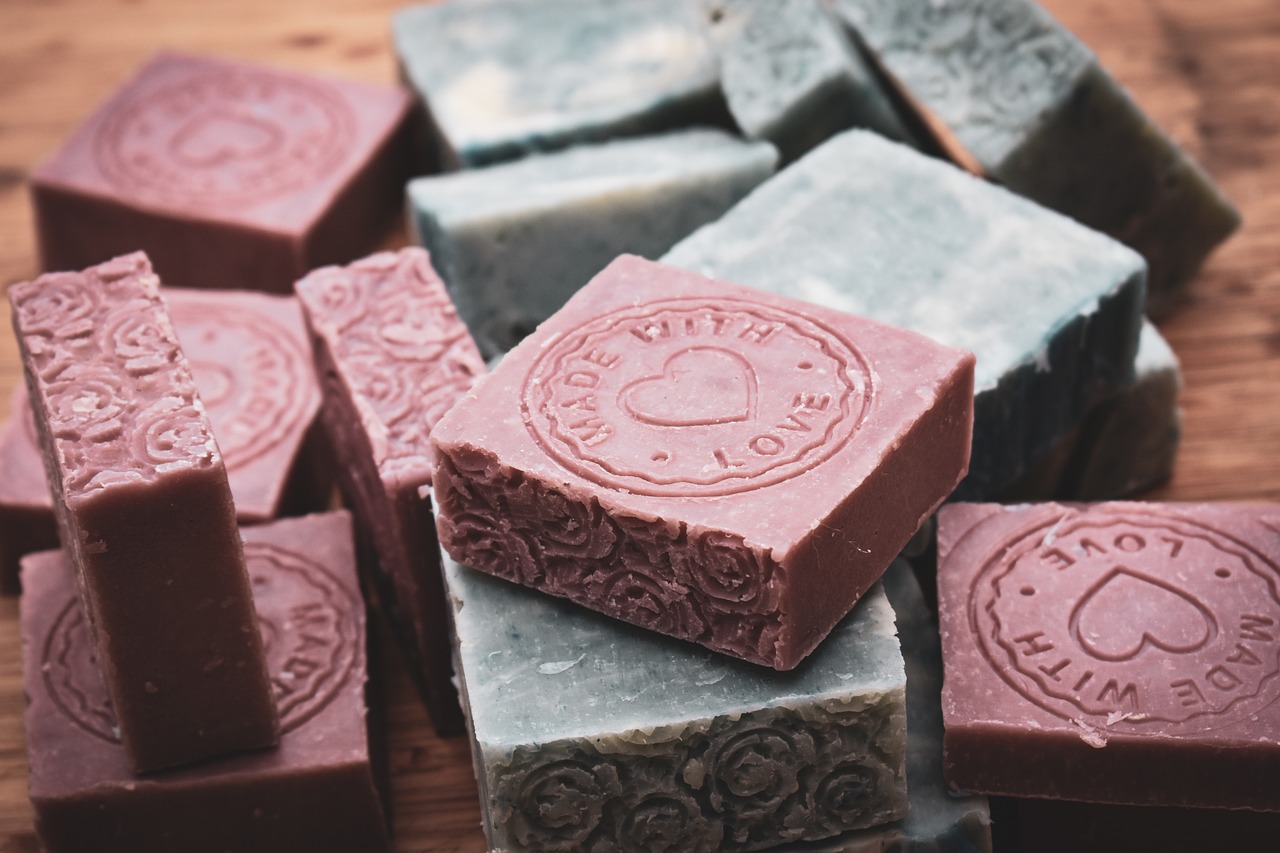
Step-by-Step Brushing Technique
Brushing your pet's teeth might seem daunting at first, but don't worry! With a little practice and patience, you can make it a part of your pet's routine. The key is to approach it systematically, ensuring both you and your furry friend feel comfortable throughout the process. Here’s a comprehensive guide to help you master the art of brushing your pet's teeth.
First things first, positioning your pet correctly is crucial. You want to find a spot where your pet feels secure. Whether it's sitting on your lap or lying on a soft surface, choose a place that minimizes distractions. If your pet is small, you might even consider placing them on a table or countertop where you can easily reach their mouth. For larger pets, having them sit or lie down next to you works best. Remember, the goal is to keep them calm and still during the brushing process.
Once you've got your pet settled, it's time to get to the brushing! Start by applying a small amount of pet-friendly toothpaste to the toothbrush. Ensure that the toothpaste is specifically formulated for pets, as human toothpaste can be harmful to them. Gently lift your pet's lip to expose their teeth and gums. This is where the fun begins! You’ll want to brush at a 45-degree angle to the gum line, using gentle circular motions. It’s not about scrubbing hard; think of it as giving their teeth a gentle massage.
As you brush, focus on the outer surfaces of the teeth, which are more prone to plaque buildup. If your pet seems comfortable, you can gradually move to the inner surfaces as well. Don’t forget to give extra attention to those back molars, as they can be a hotspot for tartar accumulation. Aim to brush for about two minutes, but if your pet starts to squirm, it’s okay to stop earlier. You can always work up to longer sessions over time!
After brushing, reward your pet with a treat or some praise. This positive reinforcement will help them associate tooth brushing with good things, making it easier for you to maintain this routine. Remember, consistency is key! Try to brush your pet's teeth at least two to three times a week for optimal dental health.
Finally, don’t forget to monitor your pet’s dental health regularly. Look for signs of gum disease or plaque buildup, such as bad breath, swollen gums, or difficulty eating. If you notice any concerning symptoms, don’t hesitate to consult your veterinarian for advice.
- How often should I brush my pet's teeth? Ideally, you should aim to brush your pet's teeth at least two to three times a week. Daily brushing is even better for preventing dental issues.
- What if my pet doesn't like having their teeth brushed? Start slow and use positive reinforcement. Gradually introduce the toothbrush and toothpaste, and reward your pet for their cooperation.
- Can I use human toothpaste for my pet? No, human toothpaste contains ingredients that can be harmful to pets. Always use toothpaste specifically designed for pets.
- What are the signs of dental problems in pets? Common signs include bad breath, difficulty eating, swollen or bleeding gums, and excessive drooling. If you notice any of these, consult your vet.
Positioning Your Pet
When it comes to brushing your pet's teeth, positioning is key. A comfortable and secure position not only makes the process easier for you but also helps your furry friend feel at ease. Imagine trying to paint a masterpiece while standing on a rocking boat—it's not going to end well! The same principle applies to brushing your pet's teeth. If they are squirming or uncomfortable, the experience can turn into a stressful ordeal for both of you.
Start by choosing a location that is calm and quiet, free from distractions. This could be a cozy spot in your living room or even the bathroom where you can easily clean up any mess. Sit your pet down on a non-slippery surface, such as a rug or a mat, to prevent any accidents. You want your pet to feel secure, so consider using a gentle grip to hold them in place. For smaller pets, you might want to hold them in your lap, while larger pets can be positioned beside you on the floor.
Here are a few tips for positioning your pet effectively:
- For Dogs: Have them sit or lie down. If they are large, stand beside them and gently hold their head to keep it steady.
- For Cats: Cats may prefer to be on a flat surface. You can even place them on a table if they are comfortable. Use one hand to hold their head gently while you brush with the other.
- Calm Your Pet: Before you start brushing, take a moment to pet and soothe your pet. This will help them feel more relaxed and less anxious.
Once your pet is in position, it’s important to keep them calm throughout the brushing process. You can talk to them in a soothing voice, or even play some soft music in the background to create a relaxed atmosphere. If your pet seems restless, don’t hesitate to take a break and try again later. Remember, patience is essential!
By ensuring your pet is properly positioned, you set the stage for a successful teeth brushing session. It's all about creating a positive experience that fosters good dental habits. After all, a happy pet makes for a happy owner!
Q: How often should I brush my pet's teeth?
A: Ideally, you should brush your pet's teeth daily. However, if that’s not possible, aim for at least two to three times a week. Regular brushing can significantly improve your pet's dental health.
Q: What if my pet doesn’t like having their teeth brushed?
A: It’s common for pets to be resistant at first. Gradually introduce the process and use positive reinforcement, such as treats and praise, to help them associate brushing with something enjoyable.
Q: Can I use human toothpaste on my pet?
A: No, you should never use human toothpaste on pets as it contains ingredients that can be harmful to them. Always opt for toothpaste specifically formulated for pets.
Q: What are the signs of dental problems in pets?
A: Watch for signs such as bad breath, difficulty eating, swollen gums, or excessive drooling. If you notice any of these symptoms, consult your veterinarian for a thorough dental examination.
The Brushing Process
Brushing your pet's teeth might seem like a daunting task at first, but with the right technique, it can become a simple and enjoyable part of your pet care routine. To ensure that your furry friend gets the best dental care possible, follow these steps closely. First, gather all your supplies before you start. You’ll need your pet-friendly toothbrush, toothpaste, and perhaps a towel to catch any drool or mess. Having everything ready will help the process go smoothly and keep your pet comfortable.
Next, position your pet in a way that makes brushing easy for both of you. For smaller pets, holding them in your lap or on a table can provide a secure environment. Larger pets may prefer standing on the floor, but make sure you can reach their mouth easily. A calm, relaxed atmosphere is essential to prevent any anxiety. You might even want to play with your pet or give them a treat before you start to create a positive association with the brushing process.
Once your pet is in position, it’s time to apply the toothpaste to the toothbrush. Remember, never use human toothpaste, as it can be harmful to pets. Instead, opt for a pet-specific toothpaste that comes in flavors like chicken or beef—trust me, your pet will love it! Start by gently lifting your pet's lip to expose their teeth. You don’t need to force their mouth open; just a gentle lift will do.
Now, here comes the fun part: the actual brushing. Use a soft, circular motion to brush the outer surfaces of your pet's teeth, focusing on the gum line where plaque tends to accumulate. Aim for about 30 seconds on each side to ensure thorough cleaning. If your pet starts to squirm or seems uncomfortable, take a break and try again later. It’s all about making this a stress-free experience for them. You can also use a gentle pressure—too much force can hurt their gums.
After you’ve brushed the outer surfaces, don’t forget to brush the back teeth and the molars, as these areas are often neglected. If your pet is comfortable, you can also try to brush the inner surfaces of their teeth, but this can be a bit tricky. Just do your best and remember that any brushing is better than none! Finally, reward your pet with a treat or some extra playtime to reinforce the positive experience.
In summary, the brushing process involves:
- Gathering supplies for a smooth experience.
- Positioning your pet comfortably and securely.
- Applying pet-friendly toothpaste to the toothbrush.
- Brushing gently in circular motions, focusing on the gum line.
- Rewarding your pet afterward to create a positive association.
Remember, consistency is key! Try to brush your pet's teeth at least a few times a week, if not daily. With time, your pet will get used to the routine, and you’ll both enjoy the benefits of a healthier mouth and happier pet!
Q: How often should I brush my pet's teeth?
A: Ideally, you should brush your pet's teeth daily. However, if that’s not possible, aim for at least a few times a week.
Q: Can I use human toothpaste for my pet?
A: No, human toothpaste contains ingredients that can be harmful to pets. Always use toothpaste specifically designed for pets.
Q: What if my pet doesn't like having their teeth brushed?
A: Start slowly and use positive reinforcement. Gradually introduce the toothbrush and toothpaste to make it a more pleasant experience.
Q: Are there alternatives to brushing?
A: Yes! Dental chews, toys, and regular veterinary cleanings can help maintain your pet's dental health, but brushing is the most effective method.

Maintaining Your Pet's Dental Health
Once you've established a routine for brushing your pet's teeth, the next step is to ensure their dental health remains in tip-top shape. Just like humans, pets require consistent care to maintain their oral hygiene. Regular brushing is a fantastic start, but it’s just the tip of the iceberg. Think of it as a foundation; without the right upkeep, even the best foundation can crumble. So, what else can you do to keep those pearly whites shining bright?
One of the most important practices is scheduling regular veterinary check-ups. These appointments allow your vet to monitor your pet's oral health and catch any potential issues before they escalate into serious problems. Typically, it's recommended to have your furry friend checked at least once a year, but depending on their breed, age, and previous dental issues, more frequent visits may be necessary. During these check-ups, your vet will perform a thorough examination and may recommend professional cleanings, which can significantly reduce the risk of periodontal disease.
In addition to check-ups, consider incorporating dental chews and toys into your pet's daily routine. These products are designed to help scrape away plaque and tartar while your pet chews, making them a fun and effective way to maintain dental health. Look for options that are specifically labeled as dental chews, as they are formulated to support oral hygiene. Here’s a quick comparison of some popular types:
| Type of Dental Chew | Benefits | Considerations |
|---|---|---|
| Rawhide Chews | Helps remove plaque and tartar. | Monitor for choking hazards; some pets may have digestion issues. |
| Dental Sticks | Designed to freshen breath and clean teeth. | Check for artificial ingredients. |
| Rubber Toys | Durable and can be filled with treats. | Ensure they are pet-safe and non-toxic. |
Moreover, don’t forget about the importance of diet. A balanced diet contributes significantly to your pet's overall health, including their dental health. Some pet foods are specially formulated to support oral hygiene by including larger kibble sizes that mechanically clean the teeth as your pet chews. Always consult with your vet to determine the best diet for your pet’s specific needs.
Lastly, maintaining your pet's dental health is not just about cleaning their teeth; it’s about creating a holistic approach to their overall well-being. Keep an eye on your pet's behavior—if they seem to be in pain while eating, or if you notice bad breath, it might be time to revisit your dental care routine or consult your veterinarian. Remember, a happy pet is a healthy pet, and that includes a sparkling smile!
- How often should I brush my pet's teeth? Ideally, you should brush your pet's teeth at least two to three times a week, but daily brushing is best for optimal dental health.
- Can I use human toothpaste for my pet? No! Human toothpaste contains ingredients that are harmful to pets. Always use toothpaste specifically formulated for pets.
- What signs indicate my pet may have dental issues? Look for signs such as bad breath, difficulty eating, swollen gums, or excessive drooling. If you notice any of these, consult your veterinarian.
Regular Check-ups
Just like humans, our furry friends need regular dental check-ups to maintain their oral health. These visits to the veterinarian are crucial as they allow for professional cleaning and examination of your pet's teeth and gums. During these check-ups, the vet will assess your pet’s dental hygiene, looking for any signs of plaque buildup, gum disease, or other dental issues that could lead to more serious health problems if left untreated. You might be wondering, "How often should I take my pet for a dental check-up?" Well, the general recommendation is at least once a year, but some pets may require more frequent visits depending on their age, breed, and overall health.
Regular check-ups not only help in identifying potential dental problems early but also allow for preventative care. Your vet can provide guidance on the best dental care practices tailored to your pet’s specific needs. For instance, they might suggest a dental cleaning procedure or recommend specific dental products that can further aid in maintaining your pet’s oral health.
Moreover, it's essential to keep track of your pet’s dental health over time. You can do this by maintaining a dental health log that includes:
- Date of last dental check-up
- Any treatments received
- Changes in dental health observed
- Recommendations from the vet
This log can serve as a valuable tool for both you and your veterinarian to monitor your pet's dental health effectively. Remember, investing in your pet's dental care today can save you from costly treatments in the future. So, make those veterinary appointments a priority! Your pet's smile depends on it!
Q: How often should I brush my pet's teeth?
A: Ideally, you should brush your pet's teeth daily. However, if that’s not possible, aim for at least two to three times a week to help prevent plaque buildup.
Q: What if my pet doesn't like having their teeth brushed?
A: Start slowly by getting your pet used to having their mouth handled. Use positive reinforcement, such as treats and praise, to create a positive association with brushing.
Q: Can I use regular human toothpaste for my pet?
A: No, regular human toothpaste is not safe for pets. It contains ingredients that can be harmful to them. Always use toothpaste specifically formulated for pets.
Q: Are dental chews effective?
A: Yes, dental chews can be a great addition to your pet's dental care routine. They help reduce plaque and tartar buildup while also freshening your pet's breath.
Q: What signs indicate my pet may have dental problems?
A: Look for bad breath, swollen gums, difficulty eating, or excessive drooling. If you notice any of these symptoms, consult your veterinarian promptly.
Dental Chews and Toys
When it comes to maintaining your pet's dental health, can be a game changer! These specially designed products not only help to keep your furry friend's teeth clean but also provide them with the mental and physical stimulation they crave. Imagine your pet happily gnawing on a chew while simultaneously reducing plaque and tartar buildup—it's a win-win situation!
Dental chews come in various shapes, sizes, and textures, making it easy to find the perfect match for your pet. They are often infused with flavors that appeal to your pet's taste buds, ensuring that they enjoy the process. Some popular options include:
- Rawhide Chews: These are classic dental chews that can help clean teeth as your pet chews through them. However, be cautious as they can pose choking hazards or digestive issues.
- Vegetable-Based Chews: Made from natural ingredients, these chews are often easier on the stomach and can be a great alternative for pets with sensitivities.
- Dental Treats: Many brands offer treats specifically designed to promote dental health. These treats often have a unique texture that helps scrub away plaque as your pet chews.
On the other hand, dental toys are another fantastic option for keeping your pet's teeth and gums healthy. They come in various forms, from rubber toys to rope toys, and are designed to be durable enough to withstand vigorous chewing. Some dental toys even have built-in features like ridges and nubs that can help clean teeth while your pet plays. Not only do they promote dental health, but they also provide an outlet for your pet's energy, reducing the likelihood of destructive behavior.
Incorporating dental chews and toys into your pet's routine should be a fun and rewarding experience. Just like brushing, consistency is key! Make it a habit to offer these products regularly, and you'll likely notice an improvement in your pet's oral health. Plus, you'll be contributing to their overall happiness and well-being.
As with any product, it's essential to supervise your pet while they are enjoying their chews or toys. This ensures their safety and allows you to monitor how well they are working to maintain your pet's dental hygiene. By combining these fun and effective tools with regular brushing and vet check-ups, you can help ensure your furry friend has a sparkling smile for years to come!
Q: How often should I give my pet dental chews?
A: It's generally recommended to offer dental chews a few times a week, but consult your vet for a personalized schedule based on your pet's needs.
Q: Are all dental chews safe for my pet?
A: Not all dental chews are created equal. Look for products that are specifically designed for your pet's size and chewing habits, and always supervise them while chewing.
Q: Can dental toys replace brushing?
A: While dental toys and chews are beneficial, they should complement, not replace, regular tooth brushing. It's essential to maintain a comprehensive dental care routine.
Frequently Asked Questions
- Why is dental care important for my pet?
Dental care is crucial for your pet's overall health. Just like humans, pets can suffer from dental diseases that lead to serious health issues if not addressed. Regular brushing helps prevent plaque buildup, reduces the risk of gum disease, and can even prevent infections that may affect other organs. Think of it as a way to keep your furry friend happy and healthy!
- What tools do I need to brush my pet's teeth?
To effectively brush your pet's teeth, you’ll need a pet-specific toothbrush and toothpaste. There are various types of toothbrushes available, including finger brushes and electric options, each offering unique benefits. Make sure to choose a toothpaste that is specifically formulated for pets, as human toothpaste can be harmful to them.
- How can I prepare my pet for teeth brushing?
Preparing your pet for brushing involves a gradual introduction to the process. Start by letting them sniff and taste the toothpaste, then gently touch their mouth with the toothbrush. Use positive reinforcement, like treats and praise, to create a positive association with brushing. Remember, patience is key!
- What is the proper technique for brushing my pet's teeth?
When brushing your pet's teeth, position them comfortably and hold their head steady. Use a soft-bristled toothbrush and brush in a circular motion, focusing on the gum line. Aim for a duration of about 30 seconds to a minute per side, ensuring you cover all areas. Consistency will help make this routine easier over time!
- How often should I brush my pet's teeth?
Ideally, you should brush your pet's teeth daily to maintain optimal dental health. However, if that's not feasible, aim for at least a few times a week. The more frequently you brush, the better the results will be in preventing dental issues.
- What additional steps can I take to maintain my pet's dental health?
In addition to regular brushing, consider scheduling routine veterinary dental check-ups to monitor your pet's oral health. Incorporating dental chews and toys into their routine can also help reduce plaque buildup and keep their gums healthy. It's all about creating a comprehensive dental care plan!

